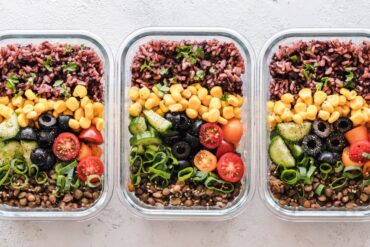Whirling Fun: The Ultimate Guide to Creating Paper Spinners with Your Kids
Welcome to the magical world of paper spinners! If you’re looking for a fun, simple, and creative activity to enjoy with your children, you’ve just struck gold! Paper spinners are not only a blast to play with, but they also offer a delightful way to introduce your little ones to basic principles of science, all while honing their fine motor skills.
What Are Paper Spinners?
Ah, the good old paper spinner! It’s a classic, timeless toy, made from nothing more than paper and a bit of clever folding. These charming little gadgets twirl merrily when you give them a whirl, captivating kids and adults alike with their mesmerizing spins.
Why Paper Spinners?
- Educational Value: Paper spinners serve as a super cool introduction to physics. They’re simple examples of how forces and motion work together, perfect for your curious kiddos.
- Creativity Unleashed: When it comes to designing paper spinners, the sky’s the limit. Kids can explore their artistic side by drawing patterns and adding their personal touch.
- Family Bonding: Crafting these spinners together can be a fantastic family activity, offering quality time while creating something from scratch.
- Planet-Friendly: They’re eco-friendly! Upcycle paper from around the house to make these spinners. It’s crafting with a green conscience.
Materials Needed
Before we jump into the fun, let’s make sure you’ve got everything you need:
- Cardstock or thick paper
- Scissors
- Markers, crayons, or colored pencils
- A paperclip or a coin
- A small dowel, straw, or a pencil (for the spindle)
- Clear tape or glue
Got everything gathered? Perfect! Now, the adventure begins!
Step by Step: Creating Your Paper Spinner
Follow these easy steps to create your very own paper spinner:
- Pick Your Paper: Start by choosing cardstock or thick paper. The sturdier the paper, the better your spinner will perform!
- Make It Colorful: Let those creative juices flow! Use markers, crayons, or colored pencils to decorate one side of the paper with vibrant colors and designs.
- Cut It Out: Using scissors, cut out a circle from your decorated paper. The size can vary, but a good starting point is between 4-6 inches in diameter.
- Add Weight: To help the spinner rotate better, tape a paperclip or glue a coin to the center of the non-decorated side of your paper circle.
- Create the Spindle: Carefully make two small slits with your scissors in the center of the circle, big enough for your dowel, straw, or pencil to slide through – this will be your spindle.
- Assembly: Slide the spindle through the slits and make sure it’s secured in place without impeding the spinner’s ability to rotate.
- Test Run: Hold the spindle between your thumb and middle finger, give it a snap or flick with your index finger, and watch your creation come to life!
Congratulations! You’ve just made your very own paper spinner. But the fun doesn’t stop there…
Remember, the design and patterns you add can really affect the visual spectacle as your spinner whirls. Encourage your children to experiment with different colors and shapes to see how it changes the spinner’s appearance in motion.
Now, let’s dive deeper into the decorating tips that can make your paper spinners even more spectacular. Keep reading for artistic inspiration and advanced paper spinner hacks! Stay tuned as we continue this guide to ensure that your family craft time is both memorable and educational.

5 Things Parents Should Know When Preparing for Paper Spinners
Before you and your kids dive into the spinning excitement, it’s important to have a few tips up your sleeve to ensure the activity goes off without a hitch. Here’s what you need to know:
1. Safety First
Even though we are working with simple materials such as paper and scissors, it’s still essential to prioritize safety. Make sure that the scissors are child-friendly if your kids will be doing the cutting themselves. Keep a watchful eye on younger children to avoid any mishaps. And most importantly, ensure a clear space for testing out the spinners to avoid any unintended flights into eyes or breakables.
2. Crafting Can Get Messy
Be prepared for a little bit of mess – after all, creativity often comes with a side of chaos! Lay down newspapers or a reusable cloth to catch any stray marker lines or glue drips. Keep wipes or a damp cloth handy for quick clean-ups, and have a designated spot for all the crafting materials to live when not in use.
3. Patience Is Key
Crafting is a process that can teach patience, both to you and your little artists. Some children might get their spinner perfect on the first try, others will need a couple of attempts. Encourage them to keep trying, and reassure them that practice brings improvement (and even more fun!). Every spinner they create will be unique and a chance to learn something new!
4. It’s Not Just About the Craft
Remember, the core of this activity is spending quality time together. Don’t rush through the steps or focus too much on the end product. Enjoy the giggles, celebrate the creative choices, and relish the time you have with each other. Building memories is just as important as building spinners!
5. Learning Opportunities Abound
While you’re folding and spinning away, don’t miss out on the opportunity to weave in some educational lessons. Talk about gravity, lift, and air resistance in a way that’s accessible to them. Ask questions like “What do you think will make the spinner spin longer?” or “Why do you think it falls down?” Use this craft to ignite their passion for learning through play.
Decorating Tips for Dazzling Spinners
Beyond the basic construction of your paper spinners, the real flair comes with how you decorate them. Here are some decorating tips to inspire your kiddos:
- Use bright, contrasting colors to create eye-catching designs that will blur wonderfully when spun.
- Try adding patterns of different shapes such as spirals, diamonds, or even little hearts – patterns with symmetry work well!
- Consider using stickers or stamps for added texture and visual interest.
- Experiment with themes; maybe your spinner could be a mini galaxy, a whirling rainbow, or a spinning superhero shield.
- Use glitter glue or metallic markers for a little sparkle – these look especially amazing when catching the light in their spirals!
Remember to let the decorated side dry completely before cutting and assembly! This way, you avoid smudging the beautiful designs your children have worked so hard on.
Advanced Paper Spinner Hacks
For those looking to take their paper spinners to the next level, here are a few advanced hacks that can enhance the spinning experience:
- Adjust the weight: Experimenting with different weights can change the spinner’s speed and agility. Try various sizes of paperclips or coins to find the sweet spot.
- Add aerodynamic features: Cut small slits around the edges of the spinner to create flaps that can be folded slightly upward. This can sometimes influence the airflow and increase spin time.
- Create a two-tiered spinner: Attach a smaller paper circle with a separate weight on top of the larger circle using the same spindle for a double-decker spinning extravaganza.
Most importantly, have a delightful time exploring the possibilities with your kids. Whether your spinners are simple or extravagant, the joy comes from creating them together. Happy spinning!
See more great Things to Do with Kids in New Zealand here. For more information see here
Disclaimer
The articles available via our website provide general information only and we strongly urge readers to exercise caution and conduct their own thorough research and fact-checking. The information presented should not be taken as absolute truth, and, to the maximum extent permitted by law, we will not be held liable for any inaccuracies or errors in the content. It is essential for individuals to independently verify and validate the information before making any decisions or taking any actions based on the articles.




